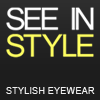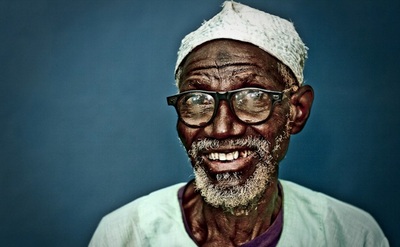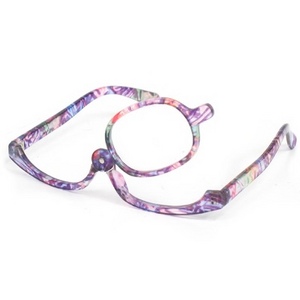Search
Recent
- Glasses Get High-Tech Part 3
- Glasses Get High-Tech Part 2
- Glasses Get High-Tech Part 1
- No optician required!
- Cheap Reading Glasses Bad For Eyesight
Popular
- No optician required!
- Glasses Consigned to History??
- Trends for 2010 and into 2011
- Which glasses suit my face shape?
Category
Archive
Glasses Get High-Tech Part 3
Category: Technology
Part 3 of 3
In our last section on high-tech glasses we explore electronic lenses and how glasses can help spot health problems early and improve the lives of blind people.
Helping With Partial Blindness
Oxford University researchers are developing glasses which could lead to blind people having a better quality of life and preventing accidents. The frames have 2 tiny cameras set into them which alert the wearers by flagging up potential obstacles and transmitting them to them lenses. The lenses act as screens, flagging up objects to the user that could get in their way. Although not available yet and costing over $1,000 a pair they are still in the early stages, but the developers are hoping within 2 years they will be widely available.
Electronic Lenses
Regular vari-focals have 2 different powers in the lenses, allowing a wearer to use them for both close items and objects in the distance. But the wearer has to look through either the top or bottom of the lens and adjust their vision. Scientists have now developed electronic lenses which know if you are reading or looking into the distance and automatically adjust the lens power. These state of the art glasses have microchips and a battery, with liquid crystals within the lenses. If a user changes where they are looking a tiny current passes through the lenses which change the shape of the liquid crystals and make them thicker or thinner. They currently retail at about 10 times the price of a regular vari-focal, we can't see them hitting your local optical store anytime soon.
Spotting Autism
Lack of eye contact has been linked with a number of neurological conditions. So researchers in the states have come up with a set of frames that track eye-gaze. The tiny cameras in the glasses track eye movements, researchers believe this will help identify developmental delays sooner. Early detection can lead to earlier treatment which is thought to be more effective.
Glasses Get High-Tech Part 2
Category: Technology
Part 2/3
In part 2 we explore more tech advancements within the vision industry and how they can help us!
Vampire Specs
They sound like something that belong in a horror movie, but these specs have lenses that enhance the color of the blood vessels under the skin and are quite useful to doctors at least. They come in purple, green or pink lenses, the green ones detect the amount of blood under the skin, whilst the purple ones highlight the purple veins in the skin. The manufacturer claims the version with pink lenses can detect changes in the skin associated with changes in emotion. Not so useful as the purple and green lenses but supposedly they can be used by security in airports to detect if a passenger is acting suspicious.
Hearing Glasses?
Yes we did say it right!, glasses that can help you hear. Each of these frames come with 4 tiny microphones in each arm. They pick up sound from the direction that the wearer is looking in whilst reducing background noise. The sounds are then relayed to each ear through a tiny tube-like earphone on either side. Although hearing aids use the same principles, the frames have a slight advantage as they are pointed in the right direction. Many of the hearing-impaired volunteers that tested the device actually preferred it to their hearing aids. Although currently they cost more then $2,000, we hope to see these come down to something mere mortals can afford in the future.
Glasses That Allow You To Get High
No we are not talking about drugs, these specs are for those of you that suffer from vertigo. If you get dizzy when standing on a ladder, you will love these next frames. Many people experience dizzy spells when looking down from even small heights. This is thought to be caused by balance sensors in the inner-ear or the brain. Researchers have come up with a novel solution to this problem, glasses that have spots on the side of the lenses. It is thought that giving the wearer something to focus on in their peripheral vision will ease their dizziness.
Glasses Get High-Tech Part 1
Category: Technology
Part 1 of 3
For the last few hundred years glasses have been used as a tool used to help people to see better. They were purely a vision aid and even just a few decades back, those high prescription, jam-jar lenses certainly made you the victim of playground bullies. With the emergence of celebrity glasses wearers the social stigma has faded, with people even wearing them as non vision correction, fashion-frames. It's now 2013 and with technological advancements, researchers have been working with our beloved frames to kick them into the next century. In this feature we look at the tech advancements that are being applied to glasses and how they will make you sleep better, hear better and even feel happier.
Happy Specs
Recent research shows that altering the type of light coming into your eyes can have an effect on other parts of the body. So someone had the bright idea of creating a pair of frames that look like a pair of glasses crossed with a sun visor that contain eight lights inside that bathe your eyes in 'white light'. The white light in turn is meant to reduce seasonal affective disorder also known as SAD, a disorder which causes depression in those that lack sunlight in the winter. Researchers put this down to the white lights increasing the 'feel good' chemicals in the brain. Although you won't be seeing anyone walking around the mall in them anytime soon, luckily they only require a 25 minutes a day to feel their full effect. Finally a pair of glasses that make you happy!
Jet Lag Reduction
Researchers have shown that green light is the most effective at delaying or advancing the body clock. Hence why the researcher involved came up with frames called re-timers. On the expensive side at over $200, these nifty little specs have a green light that shines into the eye. They are supposed to be worn for 50 minutes a day, three days after flying. Apparently they could even be used for night shift workers and lazy teenagers, yeah good luck on that one!
Nightshift Extenders
For those of you lucky enough to have done a nightshift, you will also know the effects it can have on your body. Research has shown that knocking your body clock off sync and working when you should be sleeping can lead to health problems like heart disease, weight gain, depression and even cancer. These health effects are thought to be linked to the levels of melatonin, a key hormone in regulating the body clock. The production of melatonin increases once it's dark, but exposure to bright lights can delay this process. So someone invented lenses that could block specific wave lengths in order to normalize melatonin production. I know what you are thinking, lot's of night workers falling asleep on the shift. But it regulated melatonin levels whilst not effected a workers alertness or performance on the job.
No optician required!
Category: Latest News
British inventor Josh Silver, a former professor of physics at Oxford University, has come up with a game-changer of a product design with his water-lensed glasses.
Silver has devised a pair of glasses which rely on the principle that the fatter a lens the more powerful it becomes. Inside the device's tough plastic lenses are two clear circular sacs filled with fluid, each of which is connected to a small syringe attached to either arm of the spectacles.
The wearer adjusts a dial on the syringe to add or reduce amount of fluid in the membrane, thus changing the power of the lens. When the wearer is happy with the strength of each lens the membrane is sealed by twisting a small screw, and the syringes removed. The principle is so simple, the team has discovered, that with very little guidance people are perfectly capable of creating glasses to their own prescription.
You can mass-produce millions of these, rather than manufacturing myriad individual lenses each tuned to a user's specific vision deficiencies. And while the one-size-fits-all mentality may not fly in developed nations, Silver's goal is to help the hundreds of millions of people in developing countries who suffer from poor eyesight.
Silver calls his flash of insight a "tremendous glimpse of the obvious"--namely that opticians weren't necessary to provide glasses. This is a crucial factor in the developing world where trained specialists are desperately in demand: in Britain there is one optometrist for every 4,500 people, in sub-Saharan Africa the ratio is 1:1,000,000.
The implications of bringing glasses within the reach of poor communities are enormous, says the scientist. Literacy rates improve hugely, fishermen are able to mend their nets, women to weave clothing. During an early field trial, funded by the British government, in Ghana, Silver met a man called Henry Adjei-Mensah, whose sight had deteriorated with age, as all human sight does, and who had been forced to retire as a tailor because he could no longer see to thread the needle of his sewing machine. "So he retires. He was about 35. He could have worked for at least another 20 years. We put these specs on him, and he smiled, and threaded his needle, and sped up with this sewing machine. He can work now. He can see."
So far 30,000 of Silver's specs have been distributed, but more are on the way; his eventual target is 100 million pairs.
via the guardian
eyeglasses to help put the world in focus
Category: Latest News
They’re no longer hip or modern; they no longer match your prescription or your style. Perhaps they just don’t fit or you never use them anymore?
For a person living in a developing country, used eyeglasses can help put the world in focus. For some, maybe even for the very first time.
SeeInStyle.com have teamed up with socially aware lifestyle magazine RECOGNISE www.recognisemagazine.co.uk to help grow awareness of the Clearer Today program, aimed at sending 1,000 pairs of used glasses to the developing world.
A new arrival to the consumer magazine market, RECOGNISE offers a lifestyle publication driven by a desire to be an ambassador for environmental awareness and a promoter of ethical living. Every two months sees an eclectic mix of fashion, travel, gadgets, food and beauty for both men and women. Content is defined by a commitment to pinpointing companies, people and brands that are all dedicated to social awareness and responsibility. Readers will enjoy reading about some of the world’s most exciting developments. Each and every feature found within our magazine has earned its status as it demonstrates and clearly believes in the ethos of giving something back.
The goal of the Clearer Today program is to meet the demand for quality eyeglasses in developing nations, providing otherwise unobtainable prescription eyewear to those who need it most. All types of eyeglasses and sunglasses, prescription and non-prescription are acceptable for recycling.
If you have a pair of unwanted specs or sunglasses – drop us an email at clearertoday@seeinstyle.com and we will arrange collection of your old glasses from you at no cost.
Don’t throw away someone’s chance for a clearer today. Donate your used prescription eyeglasses and someone in the world gets to see again
Readers of RECOGNISE also receive a 15% discount with SeeInStyle.com by quoting the code "recognise" during the check out process.
WTF of the day: Cyclops glasses
Category: Random!
On sale from classiceyeglasses (via ebay) we found some eyeglasses for all you mythological Greek one-eyed beasts with vision problems. Bidding starts at $22.95. Hmmm, I see a problem.
So who would possibly want to buy such a thing?? Well, these glasses are for applying makeup. This 60's trend never really caught on so don't hurt yourself too much for forgetting (or not being born yet). The lens is on a hinge, and you can flip it side to side. This way you can apply makeup to one eye more accurately than with no glasses at all.
Haha, classiceyeglasses. Let's be friends.




